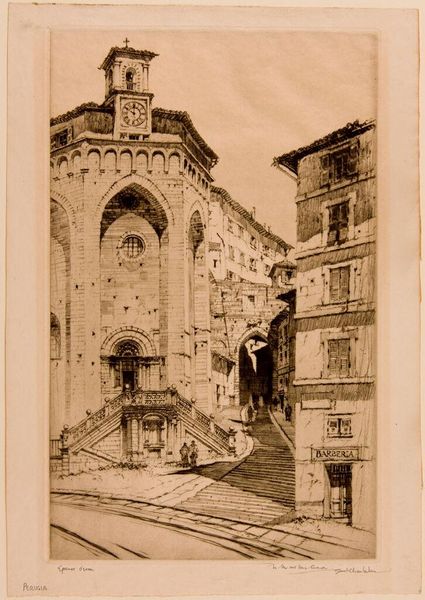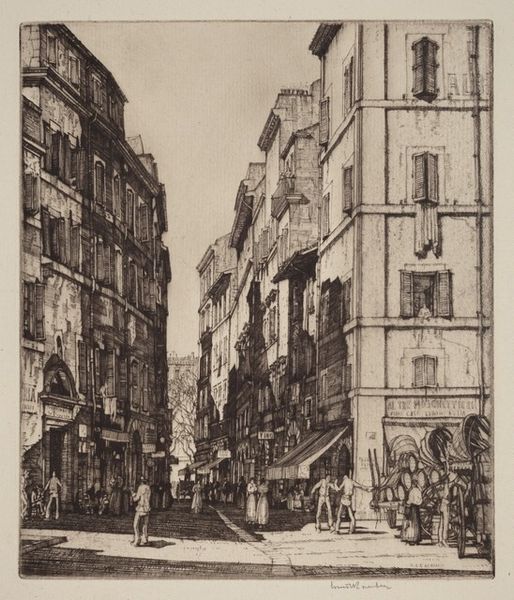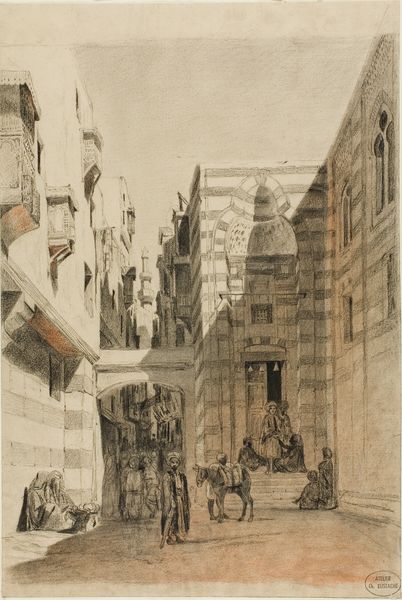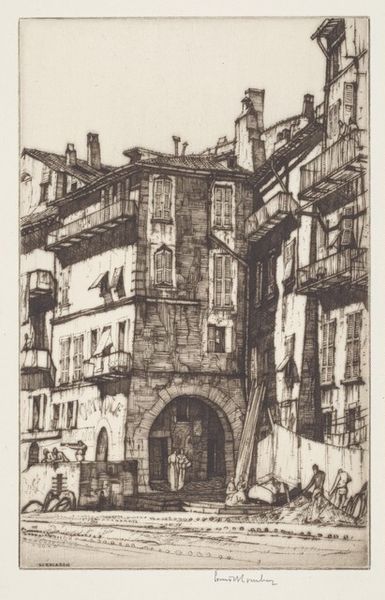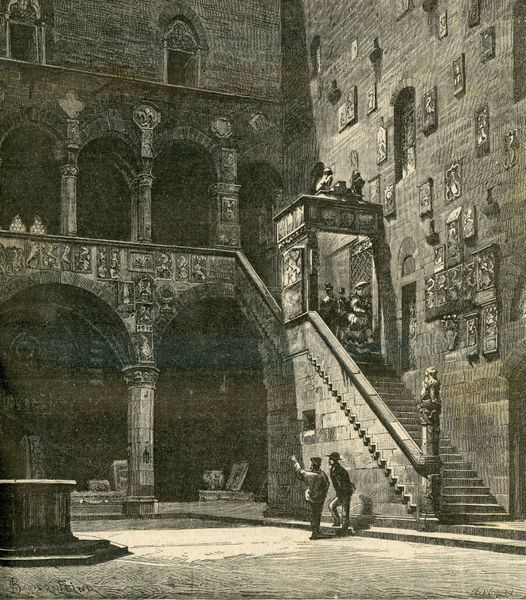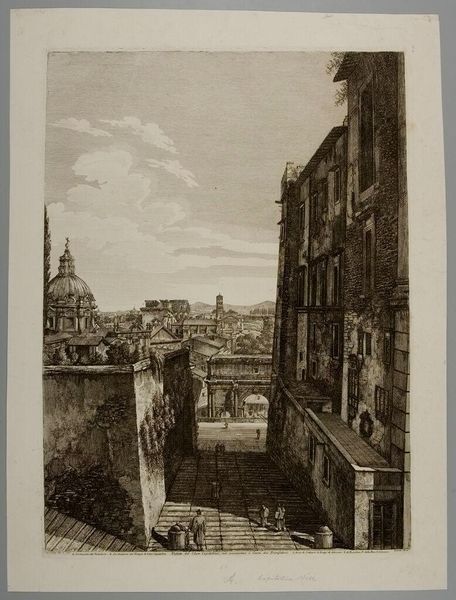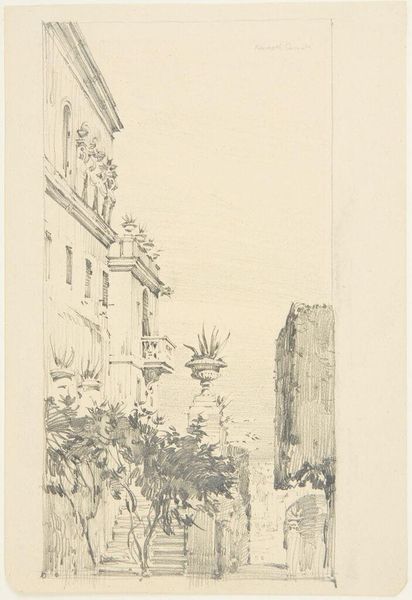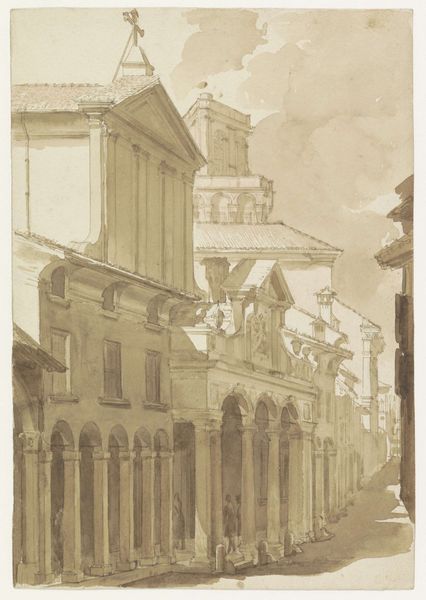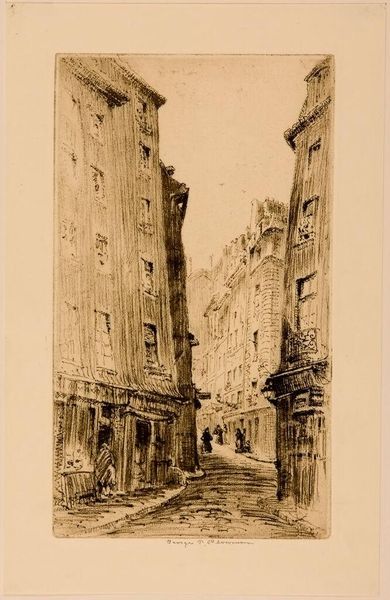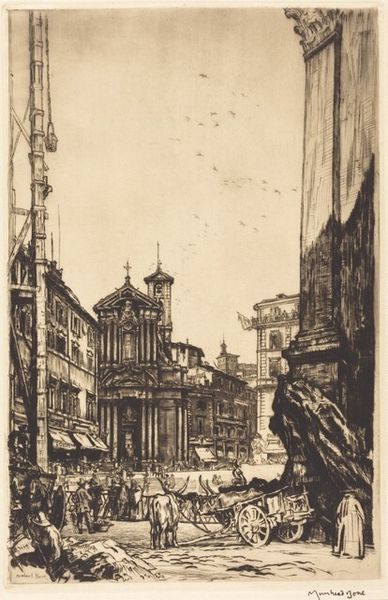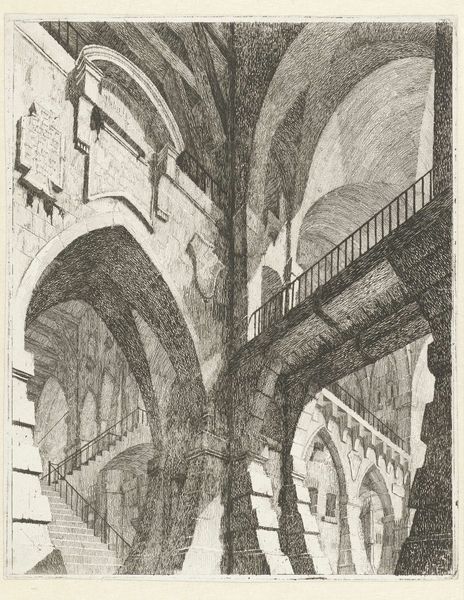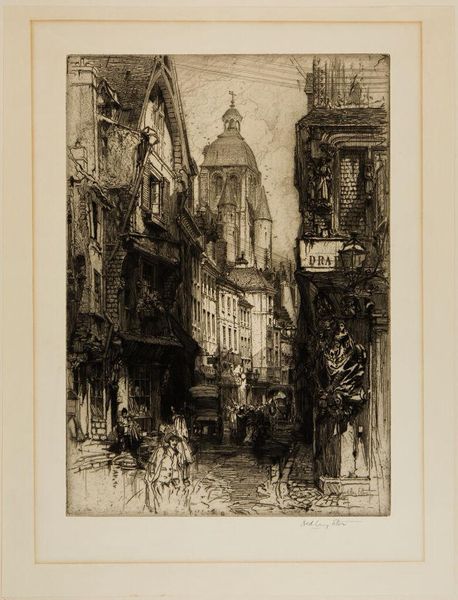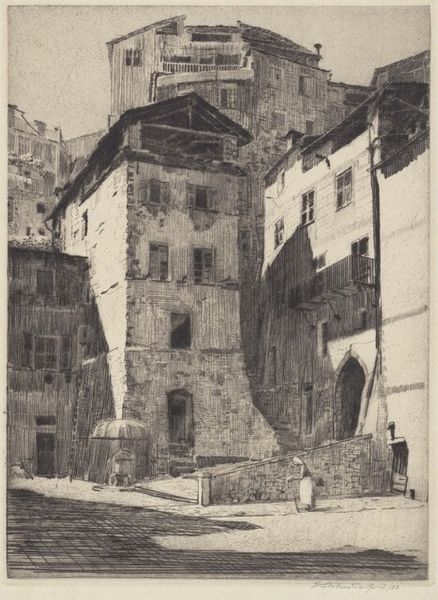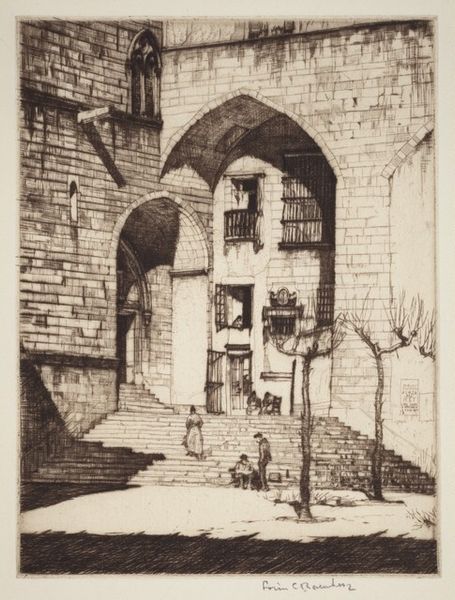
print, etching, architecture
#
architectural sketch
#
aged paper
#
mechanical pen drawing
# print
#
etching
#
pencil sketch
#
old engraving style
#
sketch book
#
sketchwork
#
pen-ink sketch
#
pen work
#
architecture drawing
#
cityscape
#
architecture
Dimensions: plate: 31.75 × 19.69 cm (12 1/2 × 7 3/4 in.) sheet: 41.91 × 27.62 cm (16 1/2 × 10 7/8 in.)
Copyright: National Gallery of Art: CC0 1.0
Editor: So, here we have Samuel Chamberlain's 1928 etching, "Perugia," a stunning architectural print. It reminds me of those old-world European drawings you’d find in a dusty library. I'm really drawn to the detailed linework and the overall sense of depth. What do you see in this piece? Curator: Ah, Perugia! For me, Chamberlain's work always feels like stumbling upon a half-forgotten memory. See how the light catches those arches, those worn stones? I imagine the scent of aged paper mingling with the sharp, almost metallic tang of the etcher's acid. It's more than just a cityscape, wouldn't you agree? It feels like a time capsule. I wonder, does that hint of a barber shop tucked into the right-hand corner transport you at all? Editor: Definitely! It adds a real human touch, like a secret glimpse into everyday life. The light and shadow really do create that sense of age, and now that you point it out, I notice how the depth of the lines give such texture to the stone. What exactly does "etching" mean in terms of how he would've made this? Curator: Excellent question! It is such an interesting method. In short, Chamberlain would have covered a metal plate with a waxy, protective ground. Then, he'd scratch his design through this ground, exposing the metal beneath. Next, the plate is submerged in acid, which "bites" into the exposed lines, creating grooves. Ink is then forced into these grooves, the surface wiped clean, and finally, the image is transferred to paper under immense pressure. Each print, a ghostly echo of that first, meticulously drawn line. Editor: Wow, that's an amazing process! I never thought about the tactile part of printmaking before. Thanks to you, I will now. Curator: My pleasure. Every artwork is a portal if you only know how to open the door! And perhaps the next time we’ll delve into what it was like to be an American artist working in Europe in the early 20th Century...
Comments
No comments
Be the first to comment and join the conversation on the ultimate creative platform.
